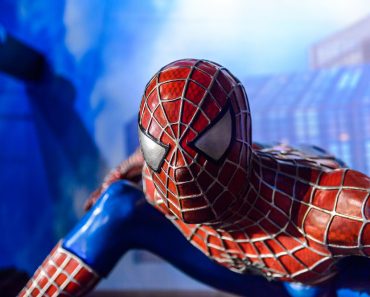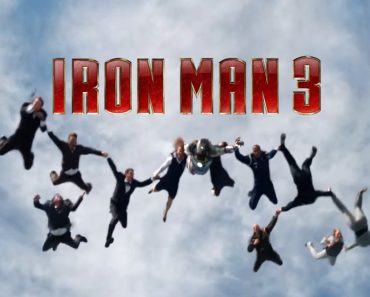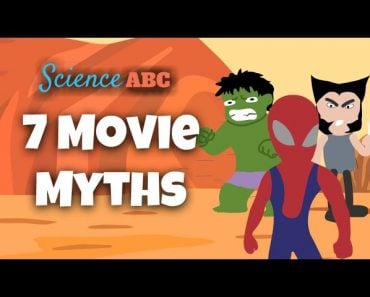No, Spiderman could not have saved her, as he didn’t have enough time for his webbing to elongate and slow down her fall. In the comic version of Gwen Stacy’s death, however, things are a bit different.
The famous saying “With great power comes great responsibility” applies to all superheroes, but some have suffered more than others. Spiderman is one such superhero who has experienced significant losses. He tragically lost his girlfriend, Gwen Stacy, when she fell from a tall building after being attacked by Green Goblin, Spiderman’s archenemy.
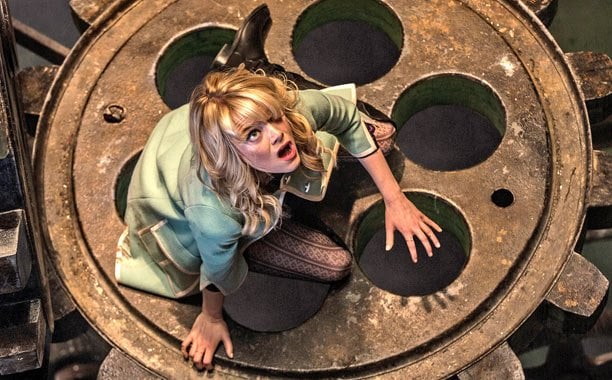
However, it is worth considering whether Gwen Stacy’s fall was the sole cause of her death. Could it be possible that Spiderman himself (unintentionally) contributed to her tragic end?
Let’s explore what science has to say regarding this controversial cinematic matter.
Recommended Video for you:
What Exactly Are We Talking About?
For those unfamiliar with the subject matter, I will begin by explaining that Marvel Studios has produced three sets of Spiderman movies. This discussion will focus on the second set of Spiderman films, The Amazing Spiderman series. The series includes two movies, and we will examine a significant event in the second film, The Amazing Spiderman 2.
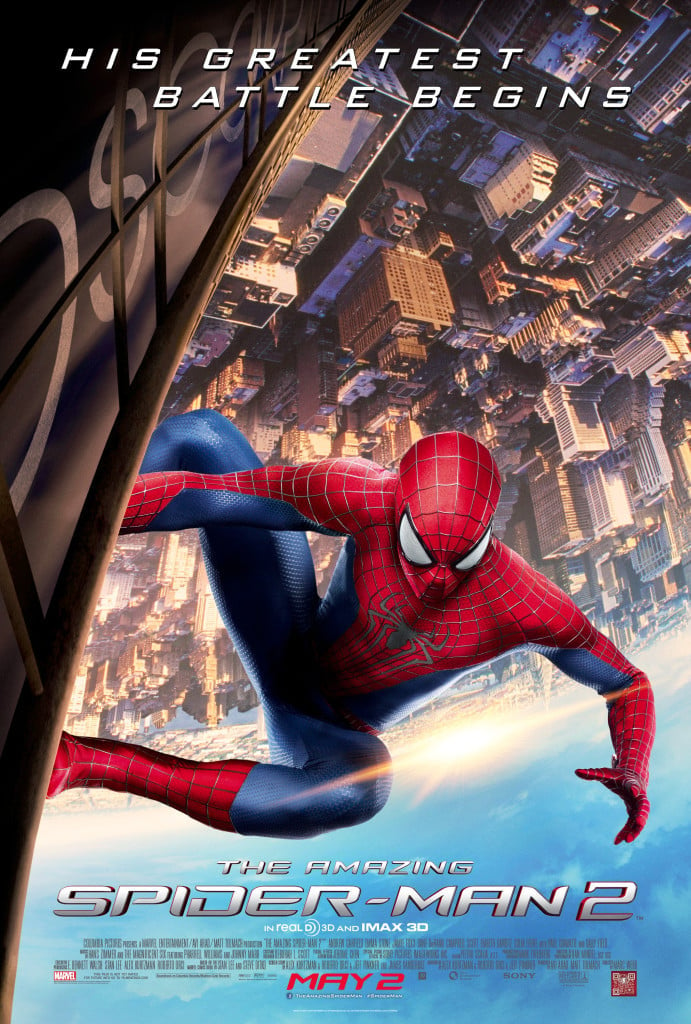
Our analysis will center around the death of Gwen Stacy, and we will explore whether there was anything that Spiderman could have done to prevent this tragic outcome from happening.
How Did Gwen Stacy Die?
In The Movie
In this scene, Spiderman and Green Goblin engage in a fierce fight over rooftops and through glass windows. Eventually, they end up on top of a clock tower where, due to Green Goblin’s actions, Gwen Stacy falls off the tower and plunges to her death. Spiderman tries to save her by shooting his web to catch her, but she hits the ground before the web can catch her, resulting in a distinct ‘thud’ sound.
In The Comic
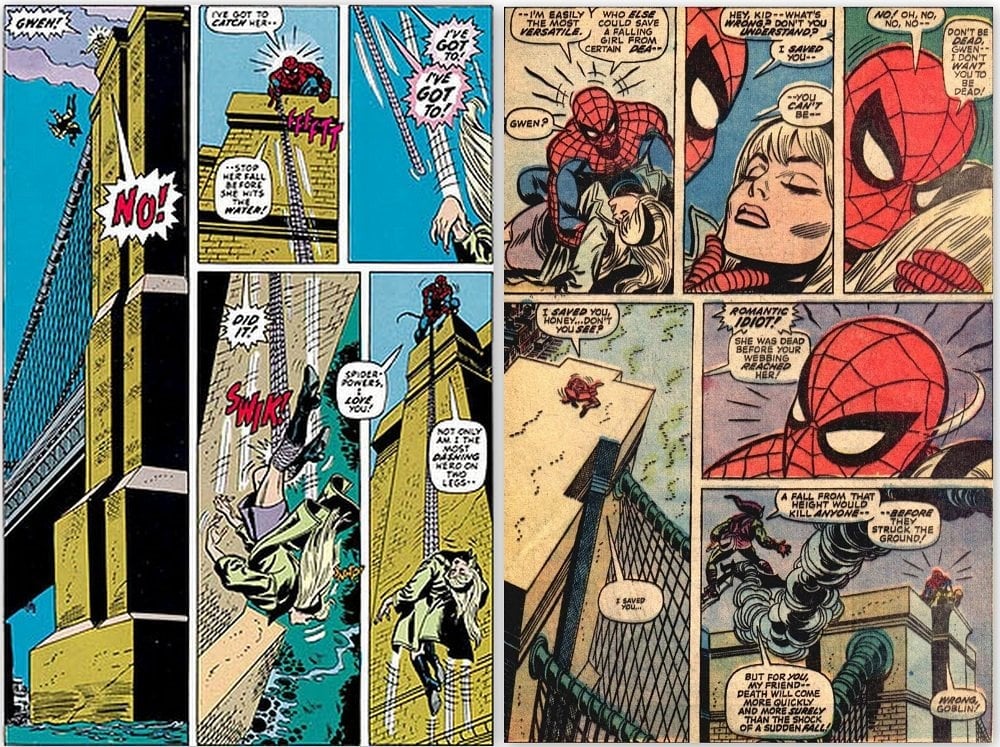
In The Amazing Spiderman #121 edition, Green Goblin knocks her off of a bridge. As she falls, Spiderman catches her in his webbing so she doesn’t hit the water.
However, just as the webbing abruptly stops her free fall, there is a ‘snap’ indicating that Gwen’s neck has been broken.
Falling From A Height: Why Is It So Deadly?
Have you ever wondered why people fear falling from great heights? It may seem like an obvious fear, but let’s take a moment to think about what happens when someone falls off a tall structure and hits the ground or water.
During a fall, you’re moving rapidly toward the ground. When you hit the ground, your velocity reduces from a very high value to zero in milliseconds. This impact exerts a tremendous force on your body, equivalent to a force many times the weight of your own body. This sudden and intense force poses a serious danger to the body.
We can use the expression below to calculate Gwen’s velocity when Spidey’s webbing catches her.
 Where g is the acceleration due to gravity (9.8 meters per second squared), ‘h’ is the height through which she has fallen already (say, 300 feet or 92 meters), and ‘v’ is her velocity. Putting all these values in the equation, her speed turns out to be 95 miles per hour (150 kilometers per hour).
Where g is the acceleration due to gravity (9.8 meters per second squared), ‘h’ is the height through which she has fallen already (say, 300 feet or 92 meters), and ‘v’ is her velocity. Putting all these values in the equation, her speed turns out to be 95 miles per hour (150 kilometers per hour).
Now, we need to use another equation – Newton’s second law of motion – to calculate the force the webbing requires to bring her to rest, i.e., reduce the velocity from 95 mph to 0 mph.
 Assuming that Gwen weighs 110 pounds (50 kilograms), she is falling through the air at 95 mph, and the webbing brings her down to rest in, say, 0.5 seconds. Given those variables, what is the force exerted on her body? How much force does she feel?
Assuming that Gwen weighs 110 pounds (50 kilograms), she is falling through the air at 95 mph, and the webbing brings her down to rest in, say, 0.5 seconds. Given those variables, what is the force exerted on her body? How much force does she feel?
An enormous amount! In fact, the force she experiences is almost ten times the weight of her own body. The result of such a great force on her body in 0.5 seconds results, quite unsurprisingly, in the ‘snap’ of her neck.
This is the reason why bungee jumpers allow a sufficient distance so that their stretching cord can stretch adequately; by doing this, they ensure that they don’t experience a heavy rebound force in only a few milliseconds; rather, that force is distributed over a longer period.
How Did Spiderman (Unwittingly) Contribute To Gwen’s Death?
The primary danger of falling from such a great height is coming to a halt in a very short span of time, thereby throwing all the internal organs into disarray and causing fatal injuries due to the enormous force. That’s why so many suicide victims who jump into rivers and canals do not die from drowning but rather due to breaking their necks.
It seems insanely crazy to think that Spiderman might have contributed to Gwen’s death, but if seen from a scientific perspective, he might have.
Catching her in his webbing and effectively bringing her to an abrupt stop wouldn’t have made much of a difference, as she still experienced a great deal of force when her free fall stopped suddenly due to the pull of the webbing. His webbing is flexible, which is a good thing, but there was simply not enough time for the webbing to elongate and distribute the impact over more than a few milliseconds, which would have given Gwen a chance to survive the fall.
Could Spiderman Have Saved Gwen Stacy?
On normal occasions, when Spiderman had more time, he could have slowed down a falling person by grabbing them with his webbing and swinging to safety, spreading the force over many seconds or even minutes.
However, in the movie scene where he tries to save Gwen, he barely has any time to act. He dove down to catch her just as she was about to hit the ground, making it difficult to stop her fall even with his webbing. Science and luck were not on Spidey’s side that day.
Nevertheless, in a later comic edition, Spiderman saves a man falling from a building like he could have saved Gwen. He slows the man’s fall with his webbing, catches him, and swings along with him to safety. You can see a similar scene in Spiderman 3 where he saves a girl using the same technique.
This is what a real superhero teaches us to do: even when you fail, learn from your mistakes, stand up, and fight back!
Last Updated By: Ashish Tiwari
References (click to expand)
- Falls from height.
- Velmahos, G. C., Demetriades, D., Theodorou, D., Cornwell, E. E., III, Belzberg, H., Asensio, J., … Berne, T. V. (1997, October). Patterns of Injury in Victims of Urban Free‐Falls. World Journal of Surgery. Wiley.
- Warner, K. G., & Demling, R. H. (1986, September). The pathophysiology of free-fall injury. Annals of Emergency Medicine. Elsevier BV.
- Glorioso, J. E., Jr., Batts, K. B., LTC, & Ward, W. S. (1999, July 1). Military Free Fall Training Injuries. Military Medicine. Oxford University Press (OUP).



